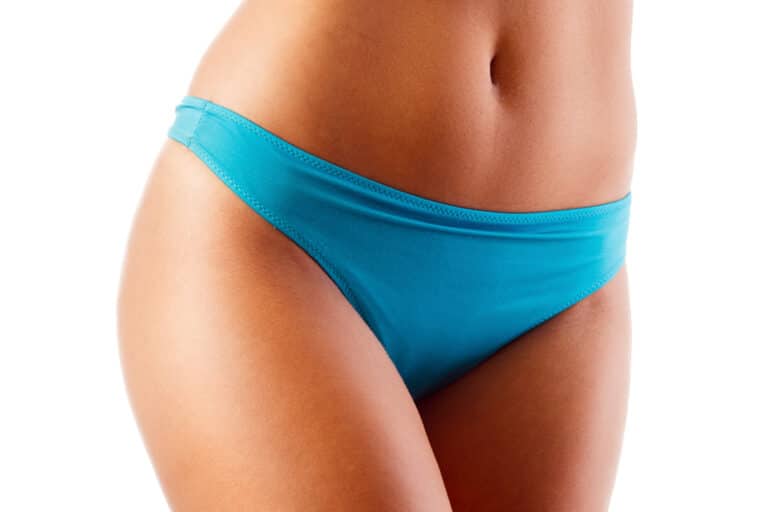How Nursing Affects Your Postpartum Body
There’s no better opportunity to bond with your newborn than breastfeeding. After all, it presents the perfect opportunity for every mother to hold, caress, and cuddle her child in her arms after nine long months of waiting.
Just the skin-to-skin contact between you and your baby during nursing is enough to calm and comfort your baby. The release of prolactin and oxytocin hormones also nurture the bond between mother and child, producing a sense of love and attachment.
But just like pregnancy, nursing is a major body changer. Some parts of your body may go back to the way it was, but other changes might be here to stay — unless you do something about it.
Know more about the changes breastfeeding does to particular areas of your body.
Weight Loss
Perhaps the biggest benefit of breastfeeding on a mother’s body is weight loss.
During your first week postpartum, you’re likely to lose around four to six pounds of water weight due to increased perspiration and urination.
Expect to lose more weight when you breastfeed, as your body burns as much as 500 calories a day just by producing breast milk.
Plus, the weight loss benefits of breastfeeding last for a long time, as a study showed that women in their 50s and 60s who breastfed when they were younger had a lower body mass index compared to those who did not breastfeed.
But along with weight loss is the development of loose skin in various areas of your body, particularly your abdomen and breasts.
Stretch Marks
Because pregnancy caused your skin to stretch at various parts of your body, expect to have stretch marks on your lower abdomen, hips, thighs, and breasts.
Stretch marks appear when the deeper layer of your skin stretches beyond its capacity, causing small tears that lead to linear scarring.
You might also notice the presence of spider veins in your breasts and varicose veins on your legs. These veins might look more prominent while you’re breastfeeding due to the increased blood flow to the breasts.
But don’t worry because they’re not permanent; they start to disappear as you wean.
Breasts
If you think your breasts are already engorged during pregnancy, wait until you start breastfeeding.
Right after you give birth, your estrogen and progesterone hormones drop. Prolactin — the hormone responsible for breast milk production — kicks in, which increases not only milk production but also blood flow in your breasts, making them look bigger.
Breast engorgement will make your boobs feel tender and sore, but keeping a regular breastfeeding schedule will ease the discomfort.
You might also notice some lumps in your breasts as you start weaning, but these lumps usually disappear after your milk dries up.
Once you’ve weaned your baby off breastfeeding, your breasts will go back to their pre-pregnancy size and shape over the course of about three months or so. However, they might be left with a drooping and deflated appearance.
Contrary to popular belief, breastfeeding doesn’t directly cause breast sagginess. Instead, your breasts’ increased size and weight during pregnancy and nursing strain the ligaments holding up your breasts, causing them to stretch.
Thus, when milk production stops, your breasts become smaller, leaving them with an empty, flattened, and droopy look.
However, you can expect your nipples and areolae to return to their original size and color.
Abdomen
Breastfeeding triggers oxytocin production, which helps your uterus contract more quickly back to its pre-pregnancy state. As a result, your tummy shrinks in size as your uterus returns to normal.
But many women might find their belly sticking out because of diastasis recti — a condition that happens when your stomach expands during pregnancy, causing your abdominal muscles to separate, lose tone, and weaken.
Even your abdominal skin might sag, resulting in a pouch-like appearance in your lower tummy area and love handles over your waistband. These are more prominent for women who had large babies and multiple pregnancies.
Arms, Buttocks, Hips, and Thighs
Good news: The fats stored in your buttocks are not converted into adipose tissue, which is hard to break down. That’s why butt fat is easy to lose after your pregnancy.
However, the loss of fat can contribute to flat bottom syndrome, characterized by drooping buttocks.
Some areas of your body may have localized fat deposits that are resistant to diet and exercise. For women who just gave birth, these fat deposits may be found in the deltoid area of the arms, the banana rolls of the buttocks, the love handles of the back, and the saddlebags on the outer thighs.
Vagina
If you had a normal delivery, it is common for your vagina to feel sore, bruised, and stretched. It will gradually get better over time.
Expect your labia to stretch and sag afterward. Severe sagging not only looks unpleasant, but it can even make you feel uncomfortable doing simple tasks like walking and maintaining your hygiene. It can also make you feel self-conscious, affecting your confidence and sex drive.
Get Your Mommy Makeover at Newport Beach, Orange County
The changes your body undergoes during pregnancy and nursing may be overwhelming, but you don’t have to live with them forever.
A 360 degree high-definition mommy makeover by one of SoCal’s most respected plastic surgeons, Dr. Siamak Agha, allows you to reclaim your pre-childbirth body.
It enhances the front and the back of your body in a three-dimensional fashion, which is the hallmark of Dr. Agha’s approach. Not only do curves get carved into your waist and hips, but your bust and butt are reshaped and enhanced as well.
Typically, you can get a mommy makeover three to six months after you stop nursing. This period is essential for the breasts to shrink to their pre-nursing size and for the abdomen to settle to its post-nursing position.
Learn more about Dr. Agha’s signature 360-degree high-definition mommy makeover.







